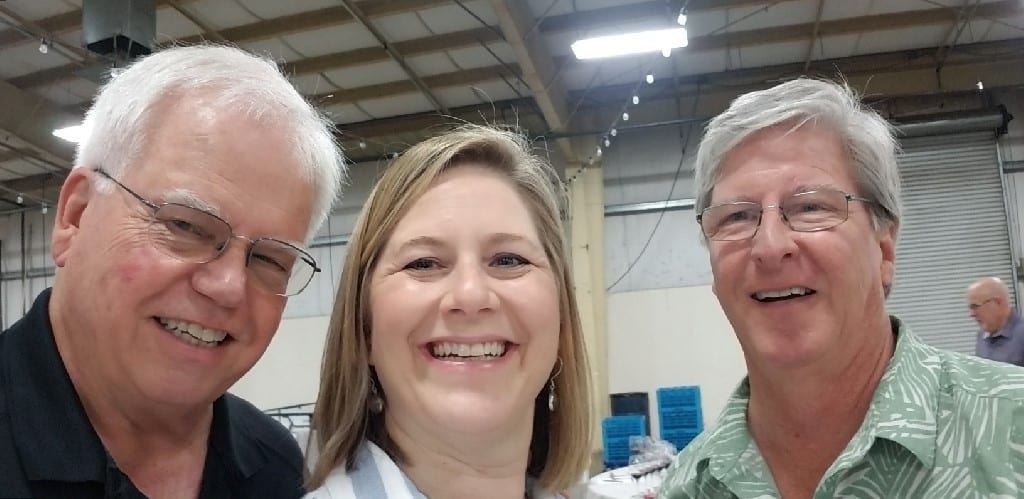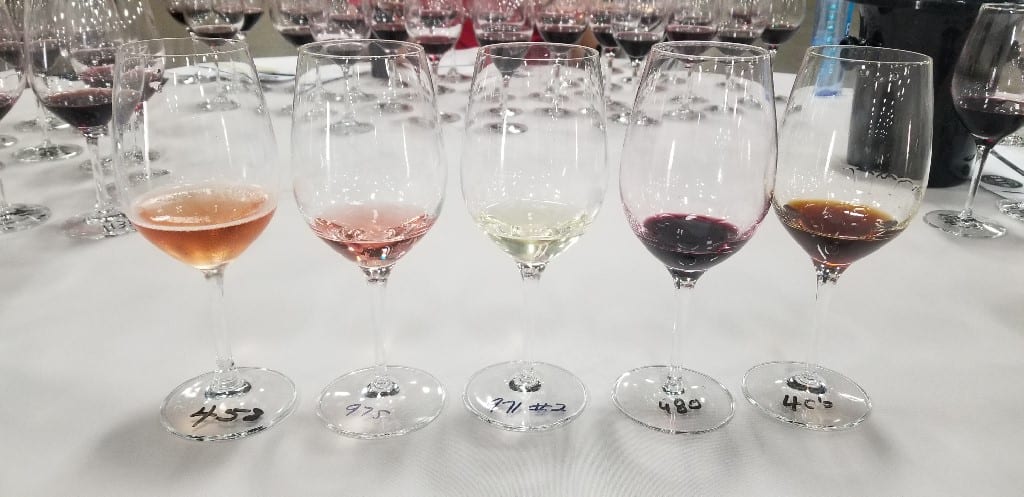
22 Jun Please The Palate Pick of the Week: The Central Coast Wine Competition
The Central Coast is the fastest growing wine region in California. It includes Alameda, Contra Costa, Santa Clara, San Francisco, San Mateo, Santa Cruz, Monterey, San Benito, San Luis Obispo and Santa Barbara counties. More importantly, the quality and diversity of the wine produced in the Central Coast is really good. To promote the excellent quality and diversity of commercial wineries in the region, the Central Coast Wine Competition is an annual event hosted by the California Mid-State Fair and sponsored by Albertsons/Vons and The Tribune and it is the Please The Palate pick of the week.
For the second year in a row, I was invited to be one of the 18 judges at the Central Coast Wine Competition. Judging wine may seem like a pretty easy way to spend two days but it is harder and more exhausting that it looks.
There were a little over 800 wine entries this year! That is an increase from last year. And that meant that there were more wines for us to judge.
We were broken into groups of three and each table was given different flights of wines. I was on a panel with Wine Journalist, Educator & Judge Mike Stepanovich and Mark Chandler, Chief Judge, CA State Fair Wine Competition.
Here was my table’s line-up for Day 1, as well as how many wines in each flight. We started with red wines:
- Zinfandel from 2017 and 2018 – 19
- Barbera – 5
- Cabernet Franc – 8
- Cabernet Sauvignon before 2016 or Non-Vintage – 24
- Other Red Wines (this included Nebbiolo, Carignan, Counoise, Graciano, Negrette, Carmenere, Valdigue, Alicante Bouchet, Aglianico, Charbono and Cinsault) – 17
- Zinfandel from 2016 – 16
That was 89 red wines and that was before lunch! By the end of the first half of the day, our teeth were purple and our tongues tingling from the acids and tannins.
After lunch, we sat down to taste white wines and rosé wines:
- Roussanne – 4
- Viognier – 29
- Rosé of Pinot Noir – 7
- Rosé of Sangiovese – 2
- Off-Dry and Sweet Wines – 4
That was 46 white wines. That was for Day 1.
To judge the wines, we tasted each wine (spitting of course) and making our own notes. We then gave each wine our own individual score (Gold, Silver, Bronze, No Award) and sometimes the score might be a Silver + or a Gold -. Once we had tasted and scored a flight on our own, we would determine the group award based on the average of the three judges. And, for our panel, we were generally all on the same page for each wine. On the occasions that we all gave a wine a Gold, it would receive a Double Gold and be sent to sweepstakes.
The next day was Sweepstakes. We walked into the room and the table was set up with 25 sparkling, white and rose wines. If any category had more than one wine (ie, there were three Chardonnays), we would taste them and as a complete group, vote for the best one. One wine from each category would be awarded Best in Class. We then tasted through the Best in Class Wines, selecting the Best Sparkling Wine, the Best White Wine and the Best Rosé.
After finishing the sparkling, white and rosé wines, we moved to another table where each of us had 41 red wine glasses in front of us. We went through the same process, slowly eliminating glasses until we had each Best in Class red wine and from there we selected the Best Red Wine.
By the end, we each had five wines in front of us – a sparkling wine, a white wine, a rosé, a red wine and a fortified wine. And, we then voted for one of these wines to win the Best in Show.
The Best in Show winner was………….sorry, you will have to re-read this post on Monday when the winners are officially announced! Come back for the updated list!
Discover more from Please The Palate
Subscribe to get the latest posts sent to your email.











